- Home
- Antonia Fraser
Warrior Queens
Warrior Queens Read online
LADY ANTONIA FRASER
THE WARRIOR QUEENS
Since 1969 Antonia Fraser has written such acclaimed and internationally bestselling historical works as Faith and Treason: The Story of the Gunpowder Plot, the biographies Mary Queen of Scots, Cromwell: Our Chief of Men, and King Charles II, and several highly praised books on women in history: The Weaker Vessel: Women’s Lot in Seventeenth-Century England, The Warrior Queens, Marie Antoinette, and The Wives of Henry VIII. Her many literary awards include the Wolfson History Prize, the St. Louis Literary Award, and the Medal of the Historical Association 2000. Antonia Fraser is married to Harold Pinter and lives in London.
Also by ANTONIA FRASER
NONFICTION
Mary Queen of Scots
Cromwell: The Lord Protector
King James VI and I
The Lives of the Kings and Queens of England
Royal Charles: Charles II and the Restoration
The Weaker Vessel
The Wives of Henry VIII
FICTION
Quiet as a Nun
The Wild Island
A Splash of Red
Jemima Shore’s First Case and Other Stories
Cool Repentance
ANTHOLOGIES
Scottish Love Poems
Love Letters
VINTAGE BOOKS EDITION, JANUARY 1994
Copyright ©1988 by Antonia Fraser
All rights reserved under International and Pan-American Copyright Conventions. Published in the United States by Vintage Books, a division of Random House, Inc., New York. Originally published in Great Britain as Boadicea’s Chariot by George Weidenfeld & Nicolson Limited, London, in 1988. Originally published in the United States of America as The Warrior Queens by Alfred A. Knopf, Inc., New York, in 1989.
Library of Congress Cataloging-in-Publication Data
Fraser, Antonia, 1932–
The warrior queens/Antonia Fraser.
p. cm.
Includes bibliographical references.
ISBN 0-679-72816-3
eBook ISBN 978-0-8041-5269-3
1. Women—Biography. 2. Queens—Biography. 3. Women in politics. 4. Women soldiers. I. Title.
D109.F72 1990
920.72–dc20 89-40487
Author photograph © Sophie Baker
v3.1
For my daughters Rebecca and Flora
Who drive their own literary chariots
With love
CONTENTS
Cover
About the Author
Other Books by This Author
Title Page
Copyright
Dedication
List of Illustrations
Author’s Note
PART ONE
1 A Singular Exception
2 Antique Glories
3 The Queen of War
4 Iceni: This Powerful Tribe
5 Ruin by a Woman
6 The Red Layer
7 Eighty Thousand Dead
8 O Zenobia!
PART TWO
9 Matilda, Daughter of Peter
10 England’s Domina
11 Lion of the Caucasus
12 Isabella with her Prayers
13 Elizabetha Triumphans
14 Jinga at the Gates
15 Queen versus Monster
16 The Valiant Rani
17 Iron Ladies
18 Unbecoming in a Woman?
Reference Notes
ILLUSTRATIONS
Between this page and this page
1 Thomas Thornycroft’s statue of Boadicea and her daughters (photograph by Sue Lanzon)
2 Boadicea, from Thomas Heywood’s Exemplary Lives (British Library)
3 Boadicea, from Aylett Sammes’ Britannia Antiqua Illustrata (British Library)
4 ‘Boadicea haranguing the Britons’, by H. C. Selous (Mansell Collection)
5 Boadicea, from H. E. Marshall’s Our Island Story
6 The Boudican firing of Londinium, by Richard Sorrell (Museum of London)
7 Boadicea and her ladies, from Holinshed’s Chronicles (British Library)
8 The Britons’ last battle against the Romans, by Alan Sorrell (Museum of London)
9 Crater depicting Amazons fighting Greeks (Mansell Collection)
10 Engraving of Cleopatra (Mary Evans Picture Library)
11 Ptolemaic plaque showing Cleopatra (Werner Forman Archive/Schindler Collection, New York)
12 Judith and Holofernes (Ronald Sheridan/Ancient Art and Architecture Collection)
13 Engraving of Zenobia (Hulton Picture Library)
14 Semiramis (Mansell Collection)
15 The Trung sisters (print kindly supplied by Dr. Ralph Smith)
16 Trieu Au (Maurice Durand Collection of Vietnamese Art, Yale University Library)
Between this page and this page
17 Countess Matilda of Tuscany (Biblioteca Apostolica Vaticana)
18 The Empress Maud (British Library)
19 Countess Matilda at Canossa, by Alfred Cluysenaar (Roget-Viollet)
20 Queen Tamara (Mary Evans Picture Library)
21 Monogram of Queen Tamara
22 Queen Isabella, a detail from The Madonna of the Catholic Kings (Oronoz, Madrid)
23 Medal showing Caterina Sforza (Victoria and Albert Museum)
24 Triumphal entry of Ferdinand and Isabella into Granada (Foto Mas, Barcelona)
25 William Rogers’ Eliza, Triumphans (Weidenfeld & Nicholson Archive)
26 Joris Hoefnagel (attrib.), Queen Elizabeth and the Three Goddesses (reproduced by gracious permission of Her Majesty Queen Elizabeth II)
27 Queen Elizabeth I at Tilbury (National Maritime Museum, Greenwich)
28 Queen Jinga being received by the Portuguese Governor (photograph supplied by the School of Oriental and African Studies, London University)
29 Queen Jinga receiving Christian baptism (photograph supplied by SOAS, London University)
30 Queen Jinga venerating her brother’s bones (photograph supplied by SOAS, London University)
31 Statue of Queen Anne by Rysbrack (photograph by Edwin Smith)
32 Catherine the Great (Novosti Press Agency)
33 The Empress Maria Theresa of Austria (Archiv Gerstenberg)
34 Monument to Maria Theresa in Vienna (Roger-Viollet)
35 Queen Louise of Prussia, a portrait by Joseph Grassi (Bildarchiv Preussischer Kulturbesitz)
36 Queen Louise, King Frederick William III of Prussia, and Tsar Alexander I at the tomb of Frederick the Great (Ullstein Bilderdienst)
37 Napoleon receiving Queen Louise at Tilsit, by N. L. F. Gosse (Ullstein Bilderdienst)
38 Kalighat watercolour of the Rani of Jhansi (Victoria and Albert Museum)
39 Contemporary painting of the Rani of Jhansi (photograph supplied by the Royal Commonwealth Society)
40 Site of the massacre at Jhansi (British Library)
41 Durga (Victoria and Albert Museum)
42 Statue of the Rani of Jhansi at Gwalior (photograph by Sophie Baker)
43 Golda Meir (Camera Press—Goldman/Setton, London)
44 Indira Gandhi (photograph by N. V. Edwards, Camera Press, London)
45 Margaret Thatcher (Press Association)
46 Queen Elizabeth II at the Trooping of the Colour (Hulton Picture Library)
47 Mrs. Thatcher with members of her Cabinet (Associated Press)
48 Cartoon of Mrs. Thatcher driving a chariot, by Griffin (Express Newspapers)
AUTHOR’S NOTE
‘That’s the Romans for you – four hundred years of occupying our country’: these indignant words were spoken in 1986 by one who, like myself, was gazing down from an observer’s platform into some archaeological excavations in the City of London. Such robust patriotism
, undaunted by the passage of quite a lot of time, reminded me of my earliest involvement with Queen Boadicea, via H. E. Marshall’s inimitable Our Island Story, a work enjoyed by me with passion as a child in the 1930s. It was Boadicea the patriotic heroine whose story first thrilled me; I wept for her treatment – and that of her daughters – and wept again, but this time in admiration, for her death.
The word heroine, as opposed to hero, is important in all this: for there is no doubt in my mind that a part – indeed a large part – of Boadicea’s appeal to me then lay in her female sex (the early feminism of those who have brothers close in age should never be underestimated). Half a century later in exploring both the history and the subsequent reputation of Queen Boadicea, those two interwoven themes of her patriotism and her femininity have not seemed to me either irrelevant or outmoded. I suppose therefore I can claim a lifetime’s preoccupation with the subject of Boadicea, even if my early feelings of dislike for the misogynist Romans have waned – just a little.
In recounting the stories of other Warrior Queens, as indeed in investigating that of Boadicea herself, I have obviously been dependent on the works of many scholars and experts in their field, to which detailed acknowledgement is made in the Reference Notes, but I should like to express my deep overall gratitude here. The spelling of proper names in a book crossing so many civilizations and cultures has obviously constituted a real problem; I have attempted to solve it by choosing that spelling I have judged most intelligible to the English-speaking world at the present date; but I should emphasize that ultimately these various choices have been mine, not those of the experts acknowledged above.
In particular I should like to thank the following: HM the Queen for gracious permission to quote from the Royal Archives at Windsor and Miss Jane Langton, late of the Royal Archives, for her assistance; Dr Chaim Herzog, President of Israel, for conversation on the subject of Golda Meir and permission to quote from material unpublished in this country; Dr Michael Grant for help and encouragement at many stages; Rana Kabbani for stimulating discussions and advice concerning the Arab world in general and Zenobia in particular, and General Moustapha Tlass, the Syrian Minister of Defence; my ‘Georgian’ consultants, the late Sir Charles Johnston (who first called Queen Tamara of Georgia to my attention), Mr Laurence Kelly, Professor Nico Kiasashvili of Tbilisi, and Mrs Katharine (Vivian) Ashton; and Dr Graham Webster and his wife Diana, not only for his help but for their hospitality. Mrs Maria Fairweather provided me with fascinating information concerning the reputation of Queen Jinga (Nzinga) in modern Angola; lastly the help of Angus Clarke and Daniel Johnson, who acted as my occhi and my Augen respectively, translating references to Matilda of Tuscany and Louise of Prussia, was invaluable.
I wish to thank the following for advice and/or support in many different ways: Dr R.J. Bingle of the India Office Library and Records; Dr Philip Crummy, Director of the Colchester Archaeological Trust; Mr Frank Delaney with whom I discussed the title at an early stage; Mr Donald Freed; Mr Tony Garratt who reminded me of Charles Doughty; Mr Tony Gregory of the Norfolk Archaeological Unit; Gale of the Daily Telegraph (Mr George Gale); Earl Gowrie; Mr Henry Grunwald, former Editor-in-Chief of Time Inc. for references to early Vietnamese heroines, and Ms Judy Stowe of BBC External Services for information concerning their reputation in modern Vietnam; Sir John Hale; Lady Selina Hastings; Mr Christopher Hibbert; Princess Antoinette Hohenlohe; Dr Lisa Jardine; Mr John Keegan; Lady Pansy Lamb; Professor Joyce Lebra-Chapman for illustrative material concerning the Rani of Jhansi; Professor Karl Leyser; Ms Sharon Macdonald; Miss Elizabeth Owles of the Moyses Hall Museum, Bury St Edmunds; Dame Felicity (Hanbury) Peake for recollections of her wartime service; Diana Phipps; Mr C. A. Price; Mr Denis Richards; the Hon. Hannah Rothschild; Mr David Spanier; Ms Dale Spender; Emma Tennant; Mr Michael Trend; Mr Paul Usherwood; Ms Kaari Utrio; Marina Warner; and Simone Warner who was my wonderful charioteer in the summer of 1985 when we explored East Anglia.
I have received editorial suggestions and advice from a galaxy of stars in the firmament of publishing, including Robert Gottlieb; Christopher Falkus, Juliet Gardiner and Linden Lawson, all of Weidenfeld’s; Sonny Mehta of Knopf; and my agent Michael Shaw of Curtis Brown; Mr John Gillingham and Mr Alan Palmer provided helpful comments on the text; Ms Jane Blumberg checked the references and Mr Douglas Matthews of the London Library did the index: to each and all of these I have good reason to be profoundly grateful. As for Richard Bates, who created out of my unruly manuscript, with the aid of his word processor, the disks from which this book was set, it seems appropriate to quote the words of Henry James concerning art itself to express my thanks: ‘I know of no substitute whatever for the force and beauty of its process’. Finally I must not forget the Home Team: from my son Orlando Fraser who did research for me at the Colindale Newspaper Library and elsewhere, and my daughter Flora Fraser Powell-Jones, always prepared to discuss the Classical world with energy, to my mother Elizabeth Longford, who may never have realized what an editorial burden lay ahead when she first encouraged me to read history. My husband Harold Pinter, although coming last in these acknowledgements, is always the first to read my work: no words of mine can express my debt to him sufficiently, so I will use his to thank him for his support when I ventured into ‘quite remote … utterly foreign … territories’.
ANTONIA FRASER
St Cecilia’s Day 1986 –
Feast of St Joseph 1988
PART ONE
CHAPTER ONE
A SINGULAR EXCEPTION
A singular exception … a woman is often acknowledged the absolute sovereign of a great kingdom, in which she would be deemed incapable of exercising the smallest employment, civil or military.
Gibbon, Decline and Fall of the Roman Empire
The stark tale of Boadicea’s stand against the Romans ‘flashes afresh to hold and horrify’ with each generation. Every British schoolchild learns her story. And lest for a moment we forget her, on the banks of the Thames, not far from the Houses of Parliament, she stands aloft in her chariot, knives sprouting from its wheels; and it is in fact those murderous knives which stamp our perception of her indelibly. Hers is a gallant – and a savage – story. Even as we bow the knee, we shudder and step back as the Warrior Queen rides by.
For all the strength of this image – depictions of Boadicea be they in art or caricature are made instantly recognizable by use of this detail – Boadicea’s chariot did not actually have knives (or scythes) affixed to its wheels. This is one of the very few statements which can be made with any certainty concerning her.
Thus one of the most powerful figures in our history in terms of popular imagination, one who did unquestionably exist in that period assigned to her, unlike ‘King’ Arthur – no chivalric monarch if he did exist but a sixth-century Romano-British commander – survives by virtue of an image which is in itself spurious. This is an apt illustration of the paradox which lies at the heart of the subject of Queen Boadicea, and by extension that of the Warrior Queen in general.
Of course the name Boadicea itself is not genuine either. That is the name generally employed in the prolific allusions made to her in contemporary society: it would be a rare day which did not produce at least one in the British Press.1 This is something which is only partly dependent on the emergence of a female Prime Minister (although, as we shall see, certain specific military situations such as the Falklands War can produce a bristling harvest of such comparisons) since Boadicea’s name can be and is invoked in a variety of different contexts. Nor is our own age unique in this respect, the unwithered ‘infinite variety’ of Queen Boadicea’s images as perceived down our history being one of the themes of this book.
While Boadicea remains therefore the convenient name for what may be termed the fabulous Queen, driving her cruelly accoutred carriage (and it will be used for that Queen in this book), a clutch of other names have been proposed as being more plausible in relation to the woman herself. ‘Our own honour, VOADICEA, o
r BOODICIA, by some BUNDUICA and BUNDUCA, Queene of the Iceni’ was Ben Jonson’s somewhat despairing description in The Masque of Queenes.2 It is a desperation that a modern chronicler of Queen Boadicea’s fortunes can share (although Ben Jonson cited only a few of the possible variants).
This uncertainty jostling the Warrior Queen’s actual name, its spelling and derivation, may also be seen as part of the paradox: the extreme fame of Boadicea contrasts with the extreme ignorance and, in many instances, actual misapprehension about her. It is ‘Boudicca’, given by Tacitus, which is in fact the only contemporary rendering of the name which has come down to us. As a result it has been in the past ‘relished by the learned’ as Winston Churchill felicitously phrased it. ‘Boadicea’, sounding so different to our ears, is actually only two letters apart from Boudicca and the famous name is thus probably based on inaccurate transcriptions of Tacitus’ Boudicca.3
In recent years however the learned have lost some of their relish for Boudicca. It is suggested, on philological evidence, that Tacitus too was in error: ‘Boudica’ must have been the correct spelling. This brings the British Warrior Queen’s name in line with the various Celtic words for victory, notably the Old Welsh bouda. It also means, happily, that Boadicea too can claim to be described as Queen Victoria (as was not infrequently noted in the late nineteenth century): for these two reasons, scholarly and sentimental, Boudica will be the name adopted for the historic figure who led the AD 60/61 rebellion against the Romans,* whereas Boadicea will be used for the legendary character.4
Other variants will be encountered and their origins traced in the course of Boadicea’s latter-day history. At the moment it is enough to point out that this ambivalence towards Boadicea’s name, like the misapprehensions concerning her career and circumstances, is also part of her aura: it has even allowed her at times to flourish under two separate identities.
In the late sixteenth century for example, an enterprising Florentine scholar—courtier named Petruccio Ubaldini, seeking royal patronage in England, wrote two volumes about the lives of illustrious ladies of yore and dedicated them to Queen Elizabeth. ‘To satisfy the most pedantic readers’, as he put it, he decided to divide the characters of Bonduica and Voadicia (although the distinction was of course a mistaken one arising out of the confusions produced by these endless variations of spelling). Faced with the stories of two queens which were, as he honestly admitted, astonishingly similar, Ubaldini boldly decided to derive a different moral from each. The moral of Bonduica’s story is thus that ‘Cruelty destroys any praise for honourable courage …’; that of Voadicia: ‘Tyranny often brings intolerable wickedness which provokes in its victims a thirst for revenge …’.5

 Warrior Queens
Warrior Queens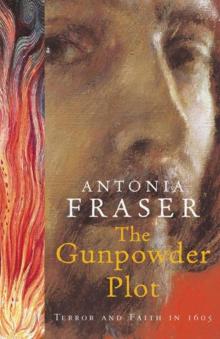 The Gunpowder Plot
The Gunpowder Plot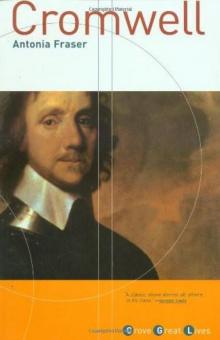 Cromwell
Cromwell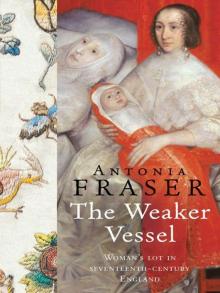 The Weaker Vessel: Women's Lot in Seventeenth-Century England
The Weaker Vessel: Women's Lot in Seventeenth-Century England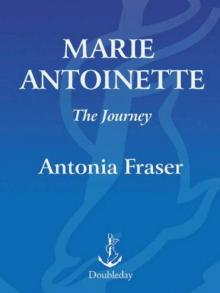 Marie Antoinette: The Journey
Marie Antoinette: The Journey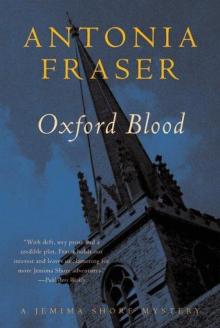 Oxford Blood
Oxford Blood Your Royal Hostage
Your Royal Hostage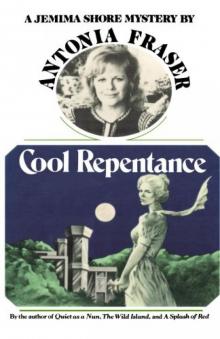 Cool Repentance
Cool Repentance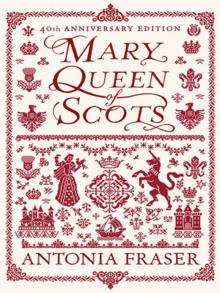 Mary Queen of Scots
Mary Queen of Scots Political Death
Political Death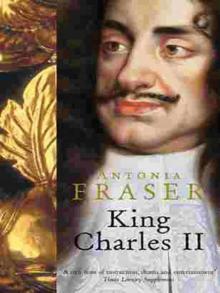 Royal Charles: Charles II and the Restoration
Royal Charles: Charles II and the Restoration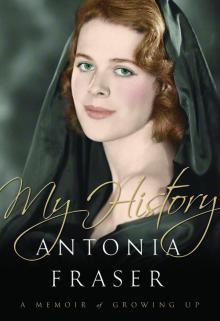 My History: A Memoir of Growing Up
My History: A Memoir of Growing Up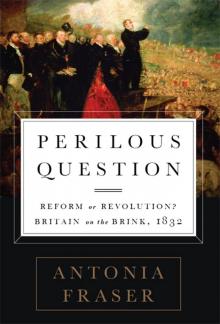 Perilous Question: Reform or Revolution? Britain on the Brink, 1832
Perilous Question: Reform or Revolution? Britain on the Brink, 1832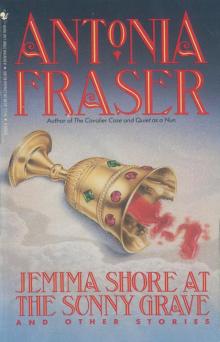 Jemima Shore at the Sunny Grave
Jemima Shore at the Sunny Grave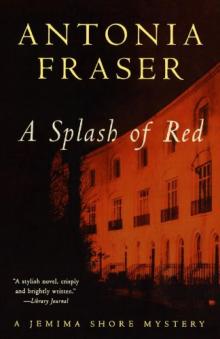 A Splash of Red
A Splash of Red Must You Go?: My Life With Harold Pinter
Must You Go?: My Life With Harold Pinter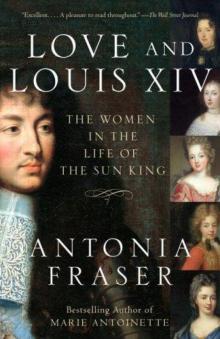 Love and Louis XIV: The Women in the Life of the Sun King
Love and Louis XIV: The Women in the Life of the Sun King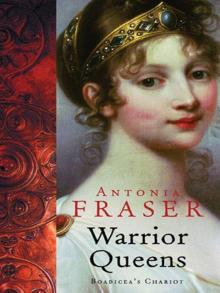 The Warrior Queens
The Warrior Queens The Wild Island
The Wild Island Quiet as a Nun
Quiet as a Nun Perilous Question
Perilous Question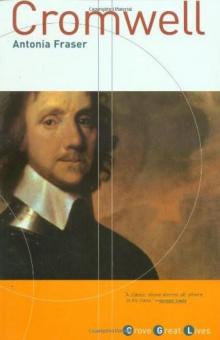 Cromwell, the Lord Protector
Cromwell, the Lord Protector Gunpowder Plots
Gunpowder Plots The Wild Island - Jemima Shore 02
The Wild Island - Jemima Shore 02 Gunpowder Plots: A Celebration of 400 Years of Bonfire Night
Gunpowder Plots: A Celebration of 400 Years of Bonfire Night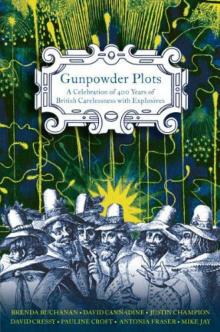 Gunpowder Plots_A Celebration of 400 Years of Bonfire Night
Gunpowder Plots_A Celebration of 400 Years of Bonfire Night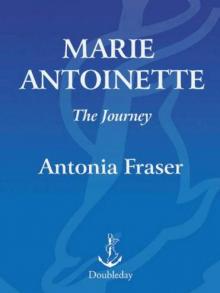 Marie Antoinette
Marie Antoinette Must You Go?
Must You Go? My History
My History